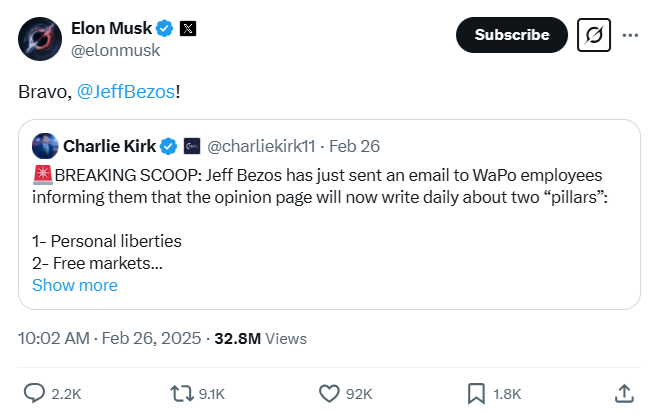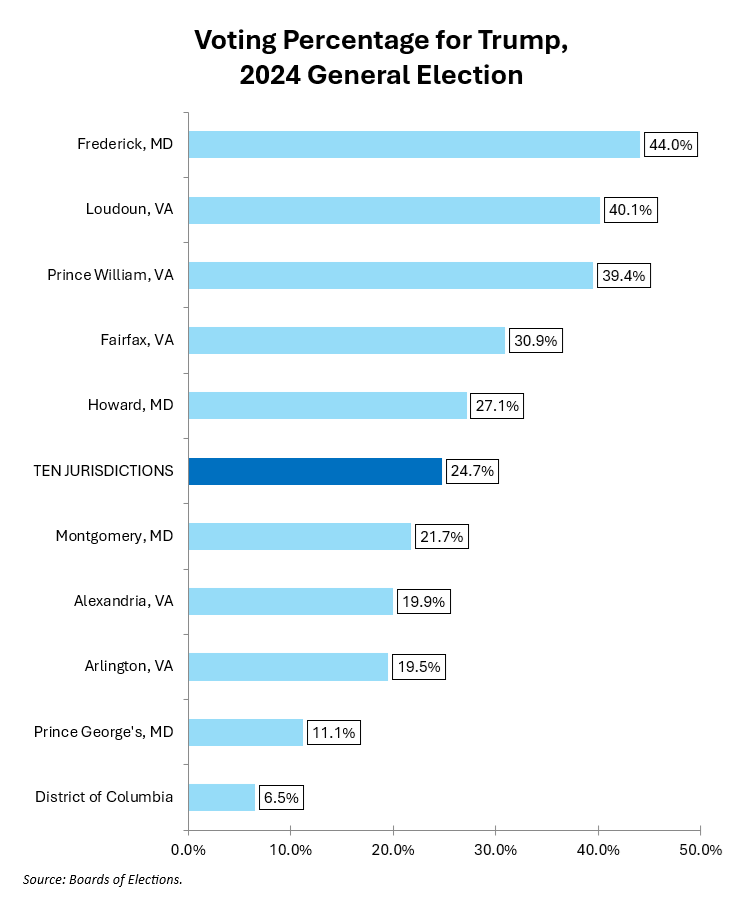By Adam Pagnucco.
With the Washington Post’s losses reported at $100 million in 2024, here is a key question:
Why on Earth is it trying to alienate its local audience?
Consider the following.
The Post has been cutting local coverage.
In October 2023, the Post announced buyouts for its staff. One of the hardest hit areas was the Metro desk, which was planned for a reduction of nearly a quarter. That’s on top of years of steadily waning attention to local issues in D.C., Maryland and Virginia. The cuts were so bad that one of the Post’s own reporters (who covers Maryland) openly attacked them on social media.
The Post’s decision not to endorse in the presidential race cost it thousands of subscribers.
In late October, the Post decided not to endorse in the presidential race for the first time in decades. Other media reported that the Post editorial board had been drafting an endorsement of Kamala Harris but top management nixed it. Post owner Jeff Bezos defended the decision by writing that “Americans don’t trust the news media,” which must have evoked an interesting reaction from his employees. Soon after, the Associated Press reported that the Post had lost a quarter of a million subscribers.
Post owner Jeff Bezos has announced a shift to the right in the paper’s opinion columns.
Last week, Bezos announced that the paper’s opinion columns would emphasize “personal liberties and free markets.” He added, “…Viewpoints opposing those pillars will be left to be published by others.”

That met with the approval of Elon Musk, who is busily slashing federal jobs and spending that the local economy depends on.

And then more cancellations followed.
This is all a huge shift from Bezos’s original vision for the Post. Shortly after he bought the newspaper in 2013, the Post reported that in meetings with staff he “repeatedly emphasized the importance of investigative journalism and said he was prepared to stand up to pressure in reporting stories that government officials might seek to suppress.” He said, “Put readers, not advertisers, first,” and added, “What has been happening over the last several years can’t continue to happen… If every year we cut the newsroom a little more and a little more and a little more, we know where that ends.”
Well, where is it going to end? As the Post shifts to the right, it would be useful for Bezos to reflect on the nature of its core audience: local readers. Most of them are not fans of President Donald Trump. The chart below shows Trump’s percentage of the vote in last year’s general election in the region’s top ten jurisdictions.

What are these readers going to think as the Post replaces local news coverage with Trump/Musk-style right-wing opinion writing? And how is this going to help the Post close its $100 million hole? Forget about ideology or politics – Bezos’s maneuvers make no sense from a business perspective.
Back in 2013, Bezos said, “The credibility that an organization like The Washington Post brings is incredibly important.”
He was right then.
Is he right now?
